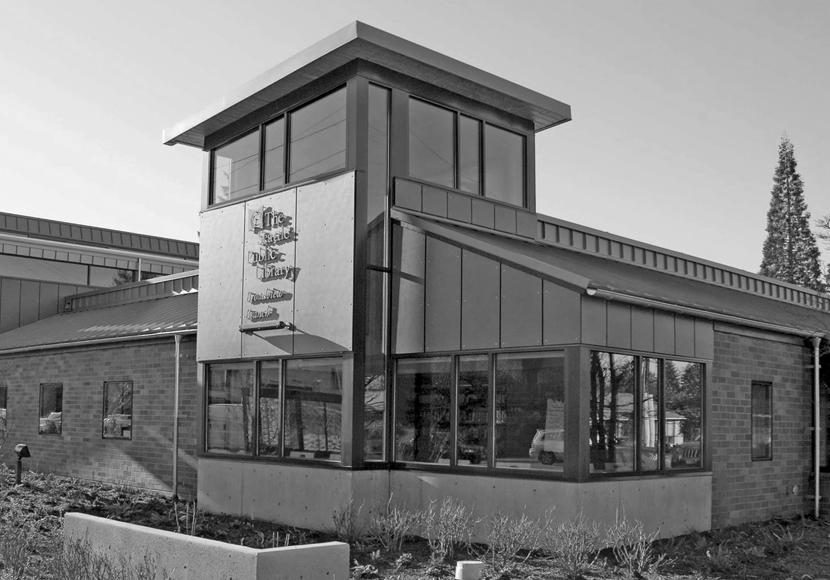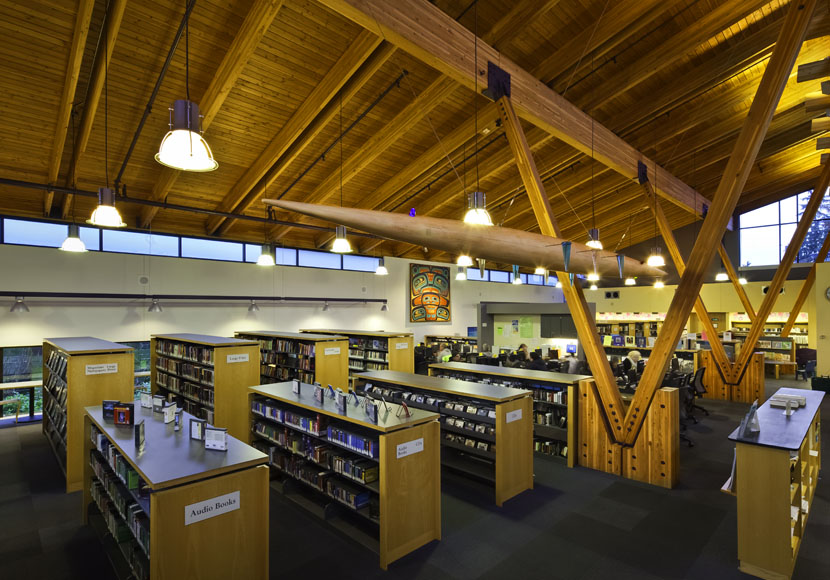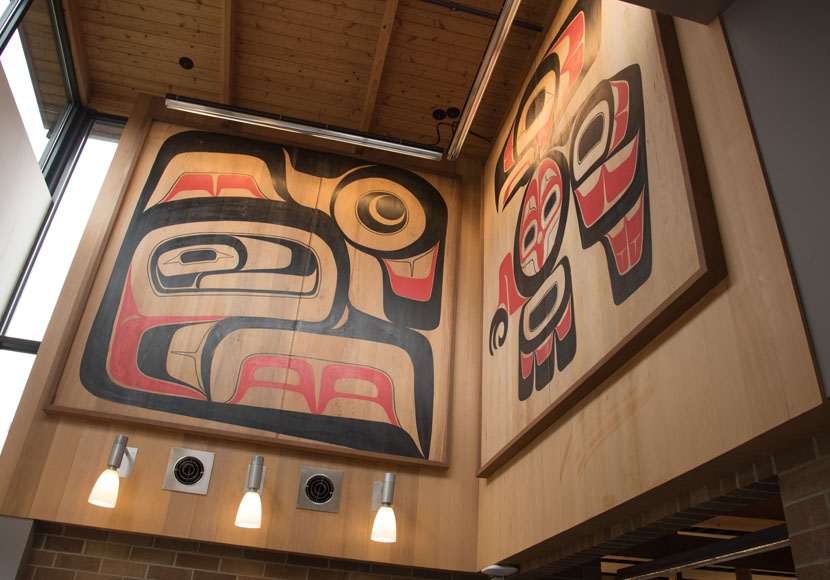Broadview Branch Highlights
The Broadview Branch is a neighborhood center for studying, research and reading. Families often visit after school.
The architecture is influenced by Native American longhouse design. Marvin Oliver of the Haida nation created art for the Broadview Branch.
History

Serving the Broadview community since 1954
The city of Seattle annexed the Broadview area in 1954. At this time, it took over a branch formerly opened by the King County Library System. In 1955, the location reopened as the Oakview Branch.
In 1967, the city of Seattle purchased a site at Greenwood Avenue North and North 130th Street. At first, Seattle’s City Council set aside money to build a library branch.
But then, City Council used the money to renovate Sicks' Stadium. The South Seattle stadium housed Seattle's first major baseball team, the Pilots. Outraged Broadview residents vigorously protested. Library patrons held a "read in" at the vacant lot purchased for their library. It was not until Dec. 15, 1975, that the Broadview Branch finally opened.
In 1998, Seattle voters approved the $196.4 million "Libraries For All" bond issue. This funded a building expansion for the Broadview Branch. The current Broadview Branch was expanded and reopened on Dec. 8, 2007. A new main entry off Greenwood Avenue North was added for pedestrians.
Architecture

Miller Hayashi Architects honored the longhouse theme evoked by the original branch. Inside the building, they retained massive vertical support logs and left an original brick wall exposed. Lofty ceilings and upper windows allow light to enter the building. Downspouts drain into planters filled with plants native to the PNW region, which helps with runoff into storm drains.
Architects: Miller Hayashi Architects, 2007; Steinhart, Theriault and Associates, 1975.
Art

Four pieces of artwork by Northwest artist Marvin Oliver, which hung in the original branch, returned to the building.
Seattle artist Theresa Batty created a suspended wooden vessel and cast glass blocks that contain images. The pieces abstractly reference navigation, direction and personal searches for belonging and identity.
Named Spaces
Spaces named for donors include:
- Ruth and Ralph Jacobson Meeting Room

